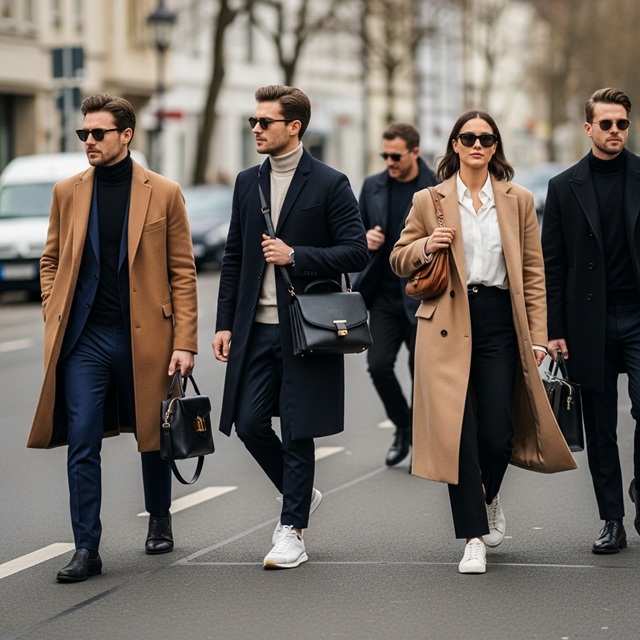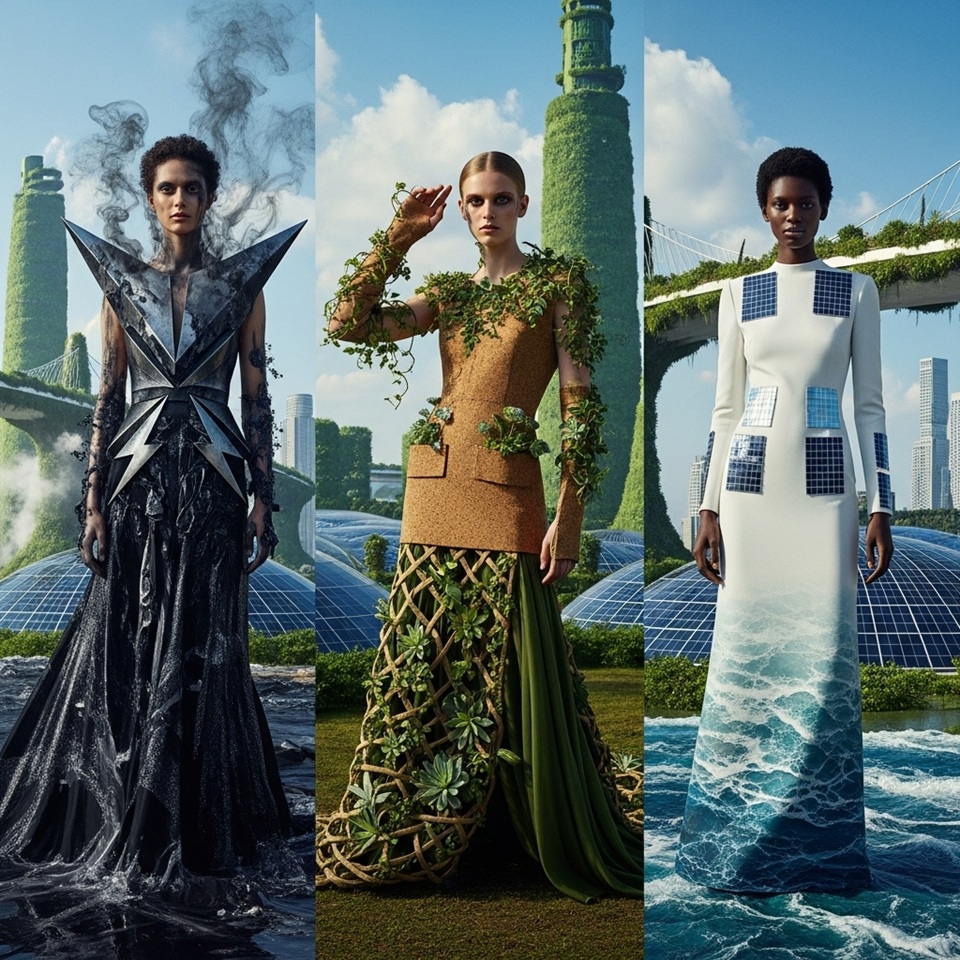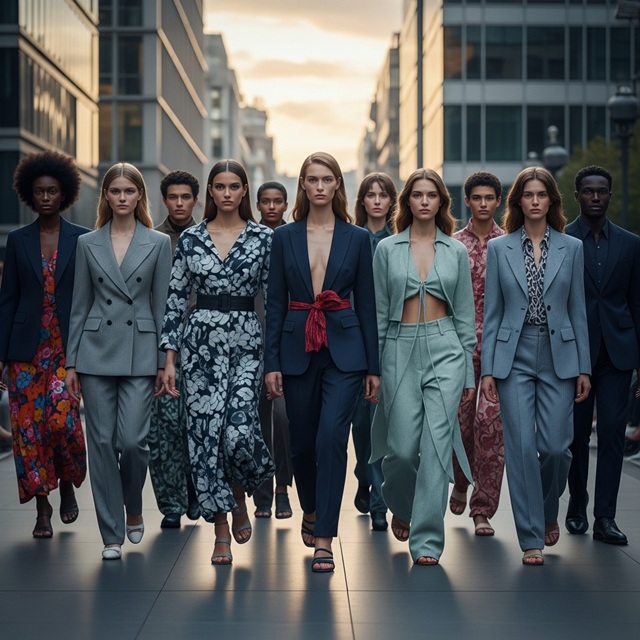Fashion Standards in Germany: Style, Identity, and Cultural Unity
Germany’s fashion scene tells a story of transformation. Once divided by cultural walls and political lines, the country has evolved into a hub of creativity, diversity, and global influence. Fashion in Germany is not just about clothes—it reflects a society that values equality, sustainability, and individuality.
The Essence of German Fashion
German fashion has long been shaped by practicality and clean design. While Paris and Milan lean toward flamboyance, Germany has embraced function and minimalism. But that doesn’t mean it’s boring. The country’s fashion voice is subtle, powerful, and deeply rooted in values that reflect its people—organized, thoughtful, and forward-thinking.
From the streets of Berlin to the boutiques of Munich, the German approach to dressing shows a quiet confidence. Germans prefer quality over excess, craftsmanship over fast fashion, and expression over conformity.
From Division to Unity: Fashion as a Symbol of Change
After decades of cultural separation, the fall of the Berlin Wall in 1989 didn’t just reunite a nation—it opened creative floodgates. The years that followed saw fashion become a platform for self-expression, freedom, and inclusivity.
Designers started using their work to challenge stereotypes and promote diversity. For example, Berlin Fashion Week often highlights collections that break traditional norms and celebrate multiculturalism. Fashion became a language of unity—a transformation from the dark past of racism and division into a modern culture of togetherness and equality.
Berlin: The Heart of German Fashion
Berlin leads the way in setting Germany’s fashion standard. It’s a city where creativity thrives and rules are meant to be broken. Here, high fashion meets streetwear, and sustainability merges with self-expression.
-
Streetwear Culture: Berliners love individuality. Streetwear brands like A Kind of Guise, Haderlump, and Odeeh mix urban style with luxury craftsmanship.
-
Sustainable Fashion: Berlin’s commitment to eco-conscious fashion is visible through events like Neonyt, a major sustainable fashion fair promoting ethical production and fair trade.
-
Inclusivity and Identity: From gender-neutral designs to collections inspired by migration stories, Berlin’s fashion scene celebrates diversity and equality.
Munich, Hamburg, and Beyond
While Berlin is edgy and experimental, Munich takes a more elegant and conservative approach. The city is home to luxury fashion houses, high-end boutiques, and global brands. Munich’s fashion lovers appreciate timeless pieces—think tailored suits, designer handbags, and neutral palettes.
Hamburg, on the other hand, offers a nautical twist. The port city’s fashion blends maritime influences with urban chic. Simple denim, stripes, and functional outerwear dominate wardrobes here.
In smaller cities like Cologne and Düsseldorf, you’ll find a mix of business fashion and youth-driven creativity, showing how regional identity still plays a role in how people dress.
The German Fashion Standard: Quality, Comfort, and Consciousness
If you were to sum up the German fashion mindset in three words, it would be quality, comfort, and consciousness. Germans are not driven by trends as much as they are by practicality and ethical responsibility.
-
Quality: Germans invest in long-lasting fabrics and well-made clothes. Brands like Hugo Boss and Jil Sander have built reputations on precision tailoring and timeless elegance.
-
Comfort: Comfort is never compromised. Even in formal wear, fit and function come first. You’ll rarely see uncomfortable shoes or overly tight clothing.
-
Consciousness: Sustainability plays a key role. Many German brands prioritize organic materials, local production, and eco-friendly manufacturing.
Sustainability: The New Fashion Identity
Germany has become one of Europe’s strongest advocates for sustainable fashion. Consumers here are more aware of environmental impact than ever before.
Local designers are embracing upcycling, vegan materials, and circular fashion models. Initiatives like Fashion Revolution Germany are educating consumers about ethical choices. Brands such as Armedangels and Lanius lead the movement with fair trade and eco-certified clothing lines.
Sustainability has grown from being a trend into a core part of the country’s identity—proof that fashion can be beautiful without harming the planet.
The Power of Diversity and Acceptance
The modern German fashion industry is inspired by inclusivity. Designers are increasingly representing all genders, body types, and cultural backgrounds.
Events such as Berlin Alternative Fashion Week focus on freedom of identity, while campaigns by brands like Adidas Germany and About You highlight models of color, LGBTQ+ individuals, and people with disabilities.
This openness stems from a shared national desire to transform the past into something better—a movement from exclusion and prejudice to unity and acceptance. Fashion here truly represents the country’s collective healing and progress.
German Designers Who Are Redefining Global Fashion
Germany has given the world some remarkable designers and brands known for combining structure with creativity.
-
Jil Sander: Known as the “Queen of Less,” she revolutionized minimalism in the fashion world.
-
Hugo Boss: A global name for sleek menswear and refined tailoring.
-
Karl Lagerfeld: The legendary creative director of Chanel, originally from Hamburg, who brought timeless German precision to French couture.
-
William Fan: A Berlin-based designer blending Asian and European aesthetics, celebrating multicultural roots.
-
Marina Hoermanseder: Famous for her bold use of buckles and leather, her work merges art and fashion.
Each designer represents a facet of Germany’s identity—discipline, creativity, and transformation.
Everyday Style in Germany
German street fashion reflects balance. On weekdays, you’ll see smart casual looks: fitted jeans, trench coats, leather boots, and minimalist accessories. Neutral colors like black, grey, and navy dominate.
On weekends, comfort takes over. Sneakers, denim jackets, and eco-bags are common. The goal is to look effortlessly put together.
Seasonal changes also influence fashion. Winters bring out high-quality coats, scarves, and durable footwear. Summers are more relaxed with airy fabrics, linen, and casual tees.
Fashion as a Reflection of Culture
German fashion goes beyond appearance—it’s tied to values like punctuality, sustainability, and respect for individuality. The country’s multicultural population has created a blend of European tradition and global influence.
African prints, Turkish patterns, and Asian-inspired streetwear are now part of Germany’s fashion vocabulary. The result is a diverse, inclusive, and forward-looking industry that encourages expression without judgment.
A Symbol of Love and Transformation
Fashion in Germany today stands as a symbol of love, equality, and unity. It represents how a country once scarred by division can transform itself into a model of inclusivity.
Through fashion, Germany shows that beauty lies in diversity and that identity can evolve without losing integrity. It’s a living reminder that clothing isn’t just fabric—it’s a message of who we are and what we believe in.
Related Articles
FAQs About Fashion Standards in Germany
1. What makes German fashion different from other European styles?
German fashion focuses on practicality and sustainability rather than luxury or excess. It’s clean, structured, and built to last.
2. Is Berlin the fashion capital of Germany?
Yes. Berlin leads with creativity and innovation, hosting several fashion weeks and sustainable fashion fairs.
3. Are German fashion brands popular internationally?
Absolutely. Brands like Hugo Boss, Jil Sander, and Adidas have strong global recognition.
4. How important is sustainability in German fashion?
It’s central. Many German brands follow strict eco-friendly production standards and emphasize transparency in their supply chains.
5. What do Germans typically wear for everyday life?
Most prefer comfortable, functional clothes in neutral tones, often from sustainable or local brands.
6. Does German fashion promote diversity and inclusion?
Yes. Modern designers are creating space for all races, genders, and body types, reflecting the nation’s growing inclusivity.
Summary
Germany’s fashion standard is not defined by luxury but by integrity, individuality, and unity. It’s a blend of function, freedom, and sustainability, symbolizing the country’s transformation from division to togetherness.
As the world watches, Germany continues to prove that true style is not about standing out—it’s about standing for something.






